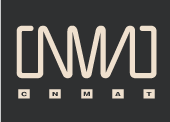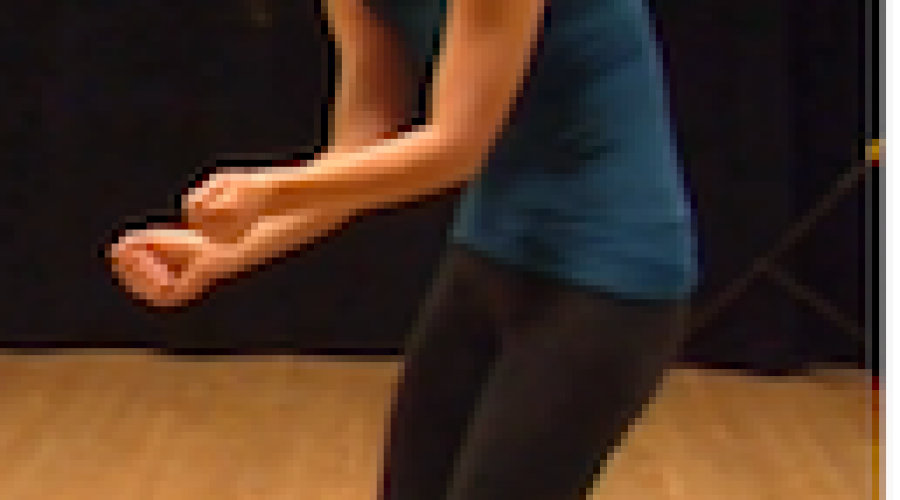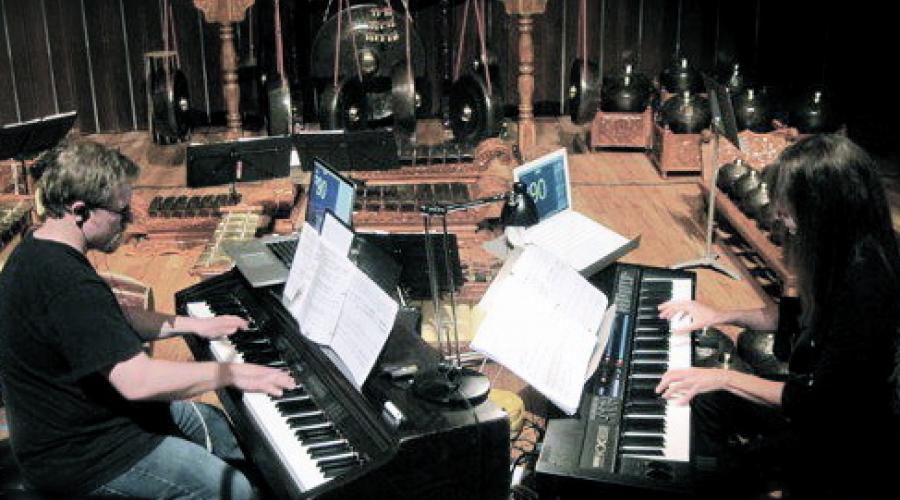
Archive
CNMAT Flashback
A look back at some items in our archives.
George Lopez, piano
Ray-Kallay Duo -- Microtonal Keyboards
Archive Browser
simple-stereo-gain~
Send stereo signals into this abstraction for LR output. This patch is meant to be used as a bpatcher that you copy (from the help file) and paste into your patch.
It contains two gain~ sliders which scale the incoming signals exponentially.
You can also add it as a bpatcher prototype so that you don't have to re-patch your audio outputs every time you create a new patcher file.
random-if-multiple-digits
This abstraction takes a single integer (base 10) and randomly selects one of its digits for output.
harmonics (list)
harmonics is a utility that generates n harmonics above a given fundamental, as a list.
The arguments are and .
list-std-deviation
Computes the standard deviation of a list of elements.
Daguerreotype
Daguerreotype
for
Violoncello and Electronics
Alone in a Crowded Room
Alone in a Crowded Room
a situation for solo alto flute and live electronics
(2005)
Michael Ferriell Zbyszynski
My musical interests in Alone in a Crowded Room are twofold. Electronically, I am exploring macroscopic and microscopic processes in the time domain. At the same time, I am engaged with the physical reality of the alto flute and by extension, the flautist.
mastertempo~
a phasor~-based metronome
Visitor Information
1750 Arch Street
Berkeley, CA 94709
(510) 643 9990 Voice
(510) 642 7918 Fax
We are located just north of the UC Berkeley main campus on Arch Street,
one block above Hearst.
Although we welcome visits, round the clock activity in our studios,
laboratories and performance space precludes unscheduled surprises. Please
contact our administrator to set up appointments.
The campus maintains
general
transit information for the area. Detailed, specific directions are
Community Calendar
Events view
- public events
- internal events, e.g. meetings, special sessions for students (not including reservations)
- deadlines for submission, etc
1997 Interview with Richard Felciano by Eric Tomb
"The most consistent influence," Richard Felciano has written about his life, "is that of my childhood in a small northern California community with substantial Japanese and Portuguese populations. From these groups I learned a sense of ritual, of structure, of awe, and of music as a social function....The reality of the world to me is East and West, stasis and dynamism, meditation and dialectic. It is also what California is - the edge where the two meet."
List of Works
Works addressing acoustical or electro-acoustical issues by Richard Felciano
Orchestral Music:
Camp Songs for chamber orchestra
Concerto for Organ and Orchestra
Galactic Rounds for orchestra
Mutations for Orchestra
Overture Concertante for clarinet and orchestra
Symphony for string orchestra
Biography of Richard Felciano
My work in electronic music began in the early sixties, as a part of
the San Francisco Tape Music Center with Morton Subotnick, Ramon Sender
and Pauline Oliveros. Possibly the most formative experience came in 1967-8
as the composer-member of a resident five-artist group at the National Center
for Experiments in Television, established by the Rockefeller Foundation
Gear Borrowing
All equipment that leaves the house needs to be reserved on the CNMAT reservation calendar. To do that, go to:
and login as:
user: cnmatreservation
password: reserve
Also, an exact list of all equipment leaving the house needs to be emailed to mzed@cnmat.berkeley.edu. Even if I am there and help you pick out the gear, I need *you* to make this list. Also included in this list is an estimate of when you plan to return the gear.
Parallel Programming Patterns in Music and Audio
Dense Linear Algebra:
- Filter-banks (e.g. compressor / expander); in hearing aids, EQ.
- Basic linear operations for massively-multi-channel arrays (many-channel arrays)
- Dimensionality reduction for control paradigms (e.g. PCA)
- Sensor integration
- SVD
Sparse Linear Algebra:
- Spectral pruning
- Pitch extraction
- Concatenative synthesis?
DAW on a Many-core System
I. Introduction
Software running on PCs has largely replaced the electronic and
electro-mechanical equipment previously used in audio and video
production.
For example, Apple's Final Cut Pro is a software video editor that has
largely replaced hardware video editors for movie trailer and
television news production. In audio recording studios, analog tape
Parallel Computation Applications Summary
MIR: parametric encodings of large audio databases for search, beat matched hybridisation, query by humming etc. Move from per song analysis to note and phrase level.
Audio and video render farms to individually watermark large media databases.
Sound Reproduction
Increased channel count in typical musical performances from 4-8 to 100's of speakers.
Kickoff Retreat Notes
Overview:
- Multicore to manycore
- Parallel Patterns, aka 13 Dwarfs
- Compelling applications for handhelds and Laptops
**SIGPLAN**
Keutzer:
- Dataflow: pipe / filter
- Semantics of parallel engineering / architecture
- Verification by approximate equality to a serial version
Sen:
- Verification by exhaustive testing / proof
- Combinatorial explosion
People
People involved at CNMAT are from a wide range of disciplines and are drawn together by their common interest in exploring the world of music. The principals are specialists in musical composition, musical psychoacoustics and computer science.
Facilities and Resources
CNMAT is located in historic Genevieve McEnerney Hall (once the headquarters
of 1750 Arch Records and the Arch Ensemble), on the hilly north edge of the
UC Berkeley Campus. The CNMAT facility includes research labs, seminar rooms, performance
spaces, offices, and digital audio recording, analysis and synthesis facilities.
Browse
Keyword Search:
The general keyword search provides instant access to information but to find information of a specific type or on a particular topic, try browsing by categories or node type.
print drupal_get_form('search_form', url('search'), $keys, $type);
?>
Browse:
If you know the type of information you want, or know some other property regarding its content, the links below will take you to a combined searchable and browseable index.



